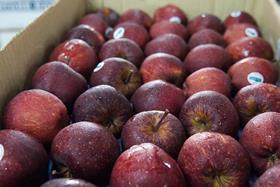
Apple production will be down in India’s main apple producing states of Himachal Pradesh and Jammu and Kashmir following significant hail damage this year.
Suri Agro Fresh managing director Hitin Suri told fruitnet.com apple crops in the states were down by around 40 per cent on last year’s volumes.
Adani Agrifresh business head Srinivasa Ramanujam reported, however, that the crop in Himachal Pradesh is down by around 50 per cent on last year, while the crop in Jammu and Kashmir would only be down by around 25 per cent.
This decrease is largely a result of hailstorms in the regions and Mr Suri said a majority of the crop in Himachal Pradesh had been affected, while Jammu and Kashmir got off relatively lightly with around 10 – 15 per cent of the crop damaged.
According to the Times of India the effects of the hail storms have been so significant the state government in Himachal Pradesh has asked the central government to declare the events natural disasters so local growers could receive compensation for the huge losses incurred.
Official estimates have pegged this year’s crop in Himachal Pradesh at 22.5m cartons (20kg). This is around half of last year’s bumper harvest of 44.5m cartons.
Despite the extent of hail damage this season Mr Ramanujam reported the quality and size of undamaged fruit has been very good owing to high soil moisture levels as a result of abundant snowfall in the regions.
Predictions are the weather would be favourable for the remainder of the growing and harvesting period, he adds.
One benefit this year from a decreased crop of good quality fruit is that pricing would be up on previous years.
Good quality fruit had been pre-booked at US$1 per kg, said Mr Suri. “This is a very good price,” he adds.
The smaller crop would also present significant opportunities for importers to provide fruit to India’s rapidly expanding apple market, says Mr Ramanujam.
Apple imports to India have boomed in recent years rising from 21,662 tonnes in the 2004/05 season, to 98,895 tonnes in 2009/10, according to figures from the country’s department of commerce. This equates to a 357 per cent increase in the last five years.
While the Indian market presents opportunities for exporters and companies operating nurseries, Mr Ramanujam warns anyone hoping to enter the market needs to be prepared to stay for the long haul.
“New varieties will only become popular if they are priced lower than reds (Red Delicious) in the initial period to encourage consumers to try them,” he said. “This is how Fuji from China established itself in India.”
He adds that New Zealand exporters have encountered limited success trying to popularise the Royal Gala variety as it has been priced higher than Red Delicious.



